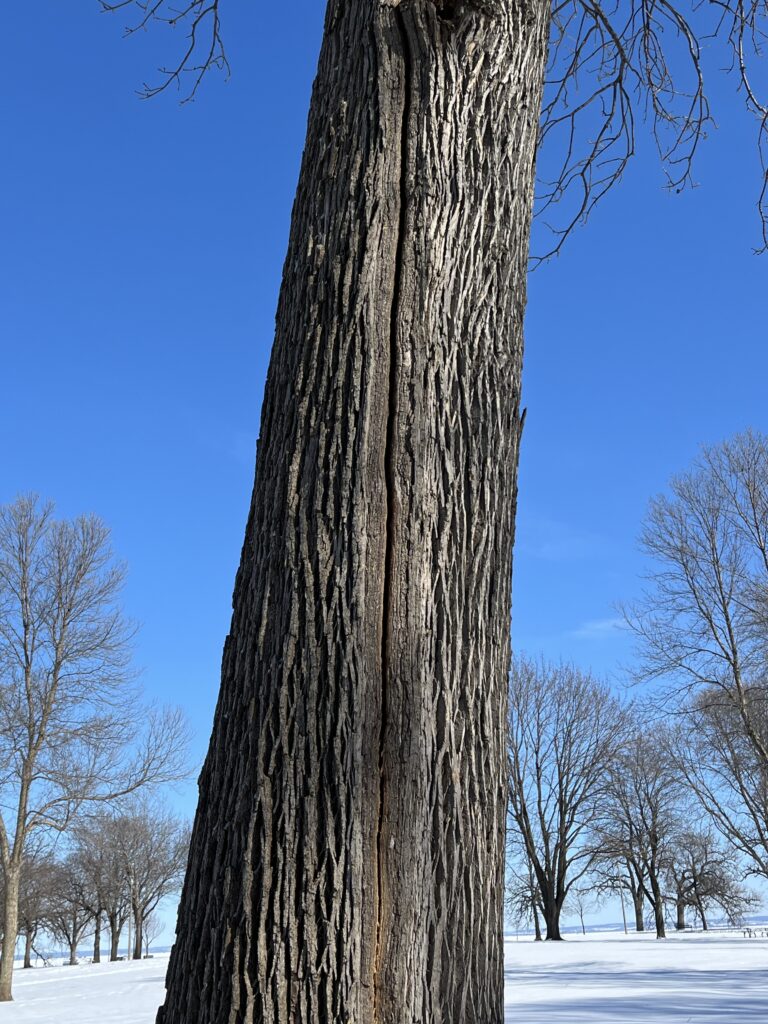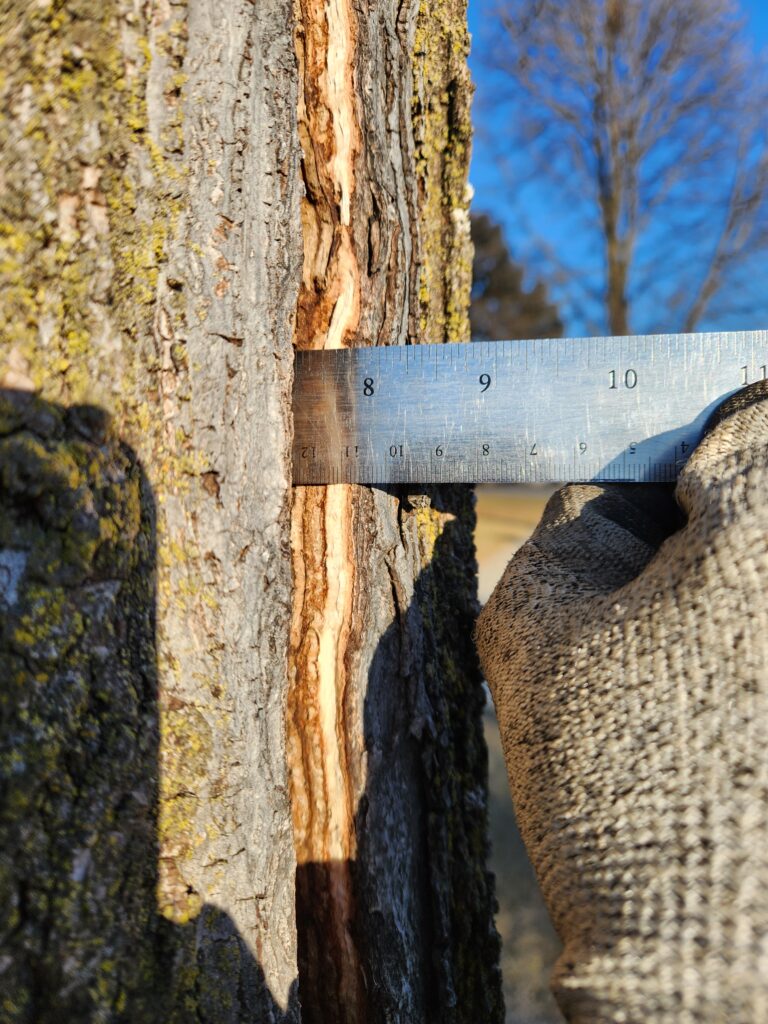By Olivia Witthun, DNR Urban Forestry Coordinator
Olivia.Witthun@wisconsin.gov or 414-750-8744
 Wisconsin winters with subzero weather can create problems for our trees. Frost cracks are one of those problems we’re seeing an uptick of lately. These longitudinal openings can run the entire length of the trunk, often extend deep into the wood, and permanently damage a tree. In wintertime, the tree may even look like it’s splitting in half! Then warmer weather comes, and the crack seems to close, repeating this process annually. Over time, frost cracks may even develop a raised area where callus tissue develops in an attempt to close over the wound, only to reopen again next winter.
Wisconsin winters with subzero weather can create problems for our trees. Frost cracks are one of those problems we’re seeing an uptick of lately. These longitudinal openings can run the entire length of the trunk, often extend deep into the wood, and permanently damage a tree. In wintertime, the tree may even look like it’s splitting in half! Then warmer weather comes, and the crack seems to close, repeating this process annually. Over time, frost cracks may even develop a raised area where callus tissue develops in an attempt to close over the wound, only to reopen again next winter.
 Trees growing in our communities are particularly susceptible because, unlike their counterparts in the forest, these trees are out in the open, where the sun shines directly on their trunks. Sunlight warms the tree’s bark and inner wood during the day, expanding those cells, especially on the south and west sides of the tree. When temperatures drop, the bark shrinks, but the inner wood takes a bit longer to cool down. If the temperature drop is sudden, this causes unequal contraction between the bark and inner wood tissues, causing a frost crack. This sudden split can even cause a loud bang!
Trees growing in our communities are particularly susceptible because, unlike their counterparts in the forest, these trees are out in the open, where the sun shines directly on their trunks. Sunlight warms the tree’s bark and inner wood during the day, expanding those cells, especially on the south and west sides of the tree. When temperatures drop, the bark shrinks, but the inner wood takes a bit longer to cool down. If the temperature drop is sudden, this causes unequal contraction between the bark and inner wood tissues, causing a frost crack. This sudden split can even cause a loud bang!
 Certain tree species tend to be more prone to frost cracking than others. It commonly occurs in thin-barked species such as maples, lindens and sycamores, but it can also occur in many other species. Frost cracks may develop in an area that was injured or pruned. Once a frost crack occurs, there is not much that can be done. The tree may continue to ‘open and close’ along with the fluctuating temperatures of our Wisconsin seasons. Keep the tree on a watch list, inspecting it for decay, insects and structural integrity. As always, keep the tree as healthy as possible by watering during dry periods, using proper pruning techniques, providing mulch under the canopy and avoiding soil compaction and other injury. There are many trees thriving with frost cracks on our landscape. Even those with lengthy, deep cracks can live a long life.
Certain tree species tend to be more prone to frost cracking than others. It commonly occurs in thin-barked species such as maples, lindens and sycamores, but it can also occur in many other species. Frost cracks may develop in an area that was injured or pruned. Once a frost crack occurs, there is not much that can be done. The tree may continue to ‘open and close’ along with the fluctuating temperatures of our Wisconsin seasons. Keep the tree on a watch list, inspecting it for decay, insects and structural integrity. As always, keep the tree as healthy as possible by watering during dry periods, using proper pruning techniques, providing mulch under the canopy and avoiding soil compaction and other injury. There are many trees thriving with frost cracks on our landscape. Even those with lengthy, deep cracks can live a long life.
The DNR’s Environmental Causes of Tree Damage fact sheet discusses the above winter health issues and additional environmental stressors. Minnesota Extension also has information on protecting trees during winter.
